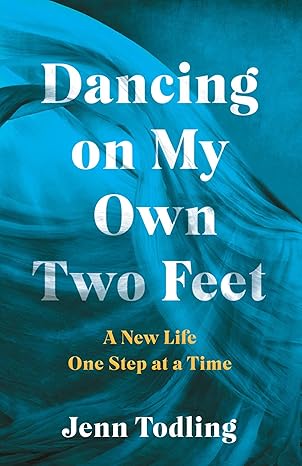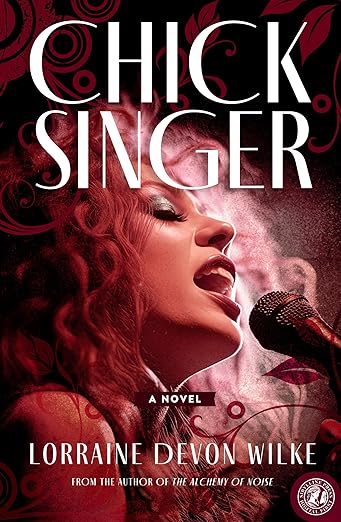The Secret Life of A Publishing Company Part II
The Secret Life of A Publishing Company Part II
 In my first post, I outlined why Jurcell Virginia and I set up Inkspot Publishing www.inkspotpublishing.com, and I promised a blueprint for setting up a publishing company. The steps are not sequential, and if you decide to go ahead, you will find yourself engaged in all of them at the same time to a greater or lesser extent, depending on where you are in the publishing process, and you will also inevitably work on several books simultaneously, all in different stages of production.
In my first post, I outlined why Jurcell Virginia and I set up Inkspot Publishing www.inkspotpublishing.com, and I promised a blueprint for setting up a publishing company. The steps are not sequential, and if you decide to go ahead, you will find yourself engaged in all of them at the same time to a greater or lesser extent, depending on where you are in the publishing process, and you will also inevitably work on several books simultaneously, all in different stages of production.
- It sounds blindingly obvious, but start with amazing content. This is inevitably subjective, but ultimately, you can’t put lipstick on a pig. Once you have a final draft, leave it to stew for a month. When you go back to it, you’ll know exactly what’s wrong. If you didn’t already, that is.
- Authors: Only work with authors whose work you love, as you will be reading and re-reading the same material so many times you could recite whole chunks of text verbatim. (Yes, the joke is on me: I now know precisely why agents and publishing houses are so picky about what they take on. Also, you can absolutely love something that refuses to sell.) Once you have found such paragons, then work extensively with them to ensure that their work is as strong as possible. I am incredibly lucky. My authors are not only talented writers, but they are also willing to accept constructive criticism. Not one of them is precious about their work.
- Get the right people around you. I’m very lucky in my publishing partner. Jurcell and I have known each other for years, and have collaborated on a long term writing project, our first non-fiction book, The Neglected Samurai, due for release later in 2024. We are working with two very talented and creative interns who bill us by the hour for what they do: social media content creation, engagement on social media, blog-writing, building up relationships with bookbloggers and reviewers, publishing research, copy-editing, proofreading and a host of other tasks. Our job is to teach them every aspect of the business to ensure they get a leg up into the industry.
- Join the IPG, the Independent Publisher’s Guild www.independentpublishersguild.com or if you’re based in the US, the IBPA: www.ibpa-online.org. It’s hard to describe how much they have helped us. Their website has a very useful educational section, the skills hub, they’ve been great for introductions and networking and their mentor scheme was invaluable in getting us going. There are other organisations, such as ALLi (The Alliance of Independent Authors) www.allianceindependentauthors.org and the Society of Authors www.societyofauthors.org, who have also repaid the cost of membership several times over. ALLi has given us access to various publisher service discounts, and SoA checked out our draft contract with authors as part of the cost of our membership. At our request, they did this from the author’s point of view. Their feedback was invaluable. I dread to think what a lawyer would have charged.
- You’ll need a website. Make sure yours is clean, clear, informative, and that you update it frequently. We sell our digital content (e-books and audio) directly on our website, and are looking at ways of tapping into the Book Club market, by offering discounts on multiple orders, and by offering author engagement wherever possible.
- To my previous point about hiring full time staff, outsource as much as possible to keep your overheads low:
- Invest in good PR. We also incredibly lucky to be working with a great PR firm, who have taken the time to understand our raison d’etre, our culture, our authors, and our mission.
- Your covers. Get a professional. They know what they’re doing. They also know exactly what requirements the printers have. They are au fait with sizing, placing, colours, bleeds, UV spotting and other special effects and have access to vast galleries of pictures and fonts which you as an amateur have no way of tapping into.
- Work with a wonderful typesetting team, who are prepared to get to know you and your requirements. Step forward the folks at www.easypress.com.
Their turnaround times are amazing, they are highly professional and are always prepared to go the extra mile.
- I outsource website maintenance, and work with someone local who can easily pop round if problems arise.
- Check out sites such as fiverr.com. The freelancers on fiverr have: designed the website and our logo, resized a cover with the correct bleeds for the printers, made youtube videos, taken charge of our Amazon ads, remastered audio files. I have used fiverr.com multiple times and have only had one bad experience. (To be fair, I had totally unrealistic expectations. I paid someone $150 to turn my first novel into a screenplay. Ha!)
- Get your metadata right. Ideally, start sending out metadata on books 4-6 months ahead of publication. This involves sending ONIX files to Nielsens, BDS and other organisations who disseminate information about books to bookshops and libraries. The metadata includes incredibly detailed information on each book: the cover, subject matter, content, THEMA and BIC classifications, Amazon interface, blurbs, marketing data, sales information, reviews, press releases, pricing, rights, forms (hardback, softback, audio, e-book versions with all their varying ISBNs), size, (height, width, spine width) extent, weight. Yes, even the weight. My kitchen scales aren’t just used for baking. We subscribe to Stison www.stison.com who disseminate the metadata via ONIX files for us.
- Will you invest in a print run or opt for Print-on-Demand (POD)? This is a key decision. Depending on the number of copies, a print run will result in a significantly lower production cost per copy than POD. However, the initial outlay required for a print run can be painful, which is why so many small publishers stick to POD. Further, you pay storage costs on unsold books which can really add up over time. The alternative is stacks of unsold books clogging up your garage, vulnerable to flood, fire, mould or rodents, and if you sell any, you’ll have to do so directly, or package and post them out yourself.
- To the previous point, you really need to spend time thinking through your distribution model. Distribution is expensive. We work with Clays and Gardners, who offer distribution to small and micro indie publishers. We order print runs of various sizes with Clays, who then supply books for distribution to Gardners. This works in the UK, but for ex-UK markets, we use POD (Print on Demand via Amazon or Ingram Spark.) We have not had the time or resources to investigate print options outside of the UK. We will continue to monitor and research various distribution options, as I’d feel a bit shifty swearing in a court of law that we’ve got it right.
- AMAZON!!!!! Arguably, this should be way further up the list. Whether you like it or not, Amazon dominates book sales in practically every country in the world. Make sure you understand how this behemoth works. Their algorithms are a mystery, and they like to keep it that way, but you should be doing your utmost to drive reviews on Amazon and GoodReads (owned by Amazon) and have a budget for Amazon ads, as this will drive book sales and reviews. (Tip: Don’t chase reviews. Instead, seek out reviewers in your genre.) You also have to be very savvy about how you classify your book. This is how some people achieve ‘Bestseller’ status: by being a top seller for just one day in an obscure category. I highly recommend Richard MacCartney’s Self Publishing: The Secret Guide to Becoming A Bestseller. Make sure you buy the latest version (Book 2) as this has been updated following Amazon’s changes to their categories system and also to their tightened policy on who can and can’t leave reviews.
- Start collecting email addresses and subscribe to a service such as mailchimp or mailerlite. Having an effective mailing list translates far more directly into book sales than social media. You need to give people a reason to part with their email address, such as free content and/or giveaways.
- Start sending out newsletters to said mailing list. Again, make sure your content is to the point and interesting. Get your authors to contribute. Give people a reason to engage with you. Our newsletter this month, for example, will include a link to this post, to a book blogging tour featuring my second novel All Grown Up, and to a collection of short stories I’ve just published as an e-book only, downloadable for free via various platforms: All Cats Are Grey In The Dark And Other Stories. (NOTE: Currently, Amazon do not allow free content unless it is available for free elsewhere. I’ve had to get in touch with their Customer Service dept requesting a price match, which they have not yet granted. The newsletter will only go out when the e-book is free on Amazon.)
- Social media: if there’s any part of the puzzle we have not yet cracked, it is this. But we’re working on it, and we’re getting better all the time. As stated above, an email list is more effective than social media, BUT this doesn’t mean it should be ignored. A strong following on social media can open a lot of doors, and the platform that is really taking off is TikTok, with the enormously influential BookTok, and it’s also offering book sales direct to customers. They’re starting to eat Amazon’s lunch. Maybe Jeff Bezos is too rich or too busy tinkering with his rockets to worry.
- EVENTS!!! If there was one aspect of publishing that I absolutely didn’t foresee, it is the organisation of events: launch parties, author interviews, festivals. These require the organisation skills of a Prussian general. You need to organise the venue, the drinks, the canapes and manage the guest list, and make sure enough people attend so your poor author isn’t speaking to an empty room.
- Build relationships with book reviewers, book bloggers, youtubers and podcasters.
- Don’t forget to include your logo on the spine of your book. A book with no logo sends a subliminal message to a reader that it has not been produced to high standards.
- Produce your own podcasts (we haven’t done this yet)
- Produce audiobooks. Audible, Spotify and similar platforms are taking off. Either initiate production yourself, or sell the rights to a third party. There are a significant number of options available, even synthetic ones, which can produce an audiobook to a decent standard very quickly for little cost. We have not yet tried a synthetic option yet, but we are considering synthetic translations. Two of our books are now available on audio, both of which have had professional readers, who brought their own personality and inflection to bear on their readings. Fans of audible books know how hugely important the narrator is to the listening experience. It’s a big priority for us to get the remainder into audio production as quickly as possible.
- I worked with Mus Coombs, author of Family or Freedom on scripting her novel into a four part TV series which we have submitted to the BBC. It’s about a British Pakistani girl who is ostracised by her family for falling in love with an Englishman. The BBC would be beyond crazy if they don’t accept it. And if they don’t, we’ll submit it elsewhere. We are working round the clock to get the Advanced Review Copy of the book ready for Mus to take to a film festival in February. Translating all our books to the screen is a big priority for us. Which leads me to my final piece of advice:
- Sell the film rights to your books to Stephen Spielberg, Ridley Scott or Katherine Bigelow. (We haven’t got round to doing this yet either.)
When you’re in the thick of it, you don’t always see the wood for the trees, so I may have omitted something vitally important. I would be delighted to hear from any other publisher or self-publisher with feedback on the points above.
My third post in this series will tell you about the mistakes that we’ve made, in the hope that you can avoid them.
—

Catherine Evans, Cathy Horlick, Silver Apples Photography
Catherine Evans was born in South Africa and grew up in Swaziland and Malawi. After a degree in English Literature and Psychology with UNISA (the University of South Africa), she worked in the City for twenty years. She is currently a Non-Executive Director for Phoenix Copper Limited, which focuses on the exploration of green metals in Idaho, USA. She lives in Oxfordshire with her husband and daughter. She also has three stepdaughters. She is the author of The Wrong’un. All Grown Up is her second book. She set up Inkspot Publishing with Jurcell Virginia in 2022.
Category: Contemporary Women Writers





























Comments (1)
Trackback URL | Comments RSS Feed
Sites That Link to this Post